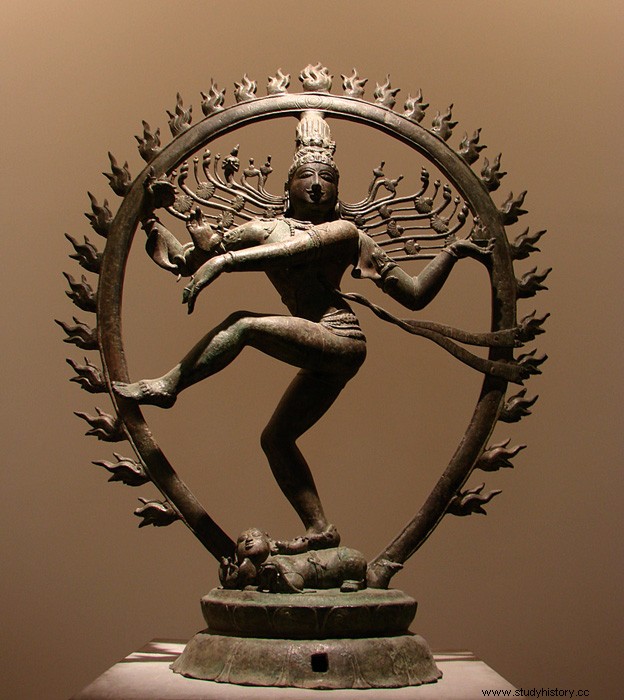
AROUND 1,500 B.C. AD
Invasion of the Aryans:
The Aryans from Central Asia, invade and settle in the Indus region and northern India .
Birth of Hinduism:
The Aryan Priests worship their creator god Indra and many other deities. As they do not know the writing, they transmit them orally. Much later, the hymns will be transcribed in writing in sacred books, the Vedas. These texts acquire great importance for Hinduism, the main religion of India today.
TOWARDS 563 – 483 BC. AD
Life of Siddhartha and birth of Buddhism:
The Indian Prince Siddhartha (also called Sakyamuni or Gautama Buddha) is the origin of the Buddhist religion . One day, while riding in a chariot, he is confronted for the first time with illness, old age and death. He is shocked by what he sees and decides to find a way to escape the suffering and live in peace. He then rejects title and palace to lead the life of a wandering sage. Many years later Siddhartha has an enlightenment, and he realizes that people are suffering because of their unattainable desires and selfishness. This revelation earned him the name of Buddha , which means “the Awakened”. People began to listen to his teachings and his ideas spread. Buddhism is not the belief in a god but a harsh and austere way of life, where one deprives oneself of material pleasures.
IN 500 B.C. AD
North India is made up of many small kingdoms.

IN 326 B.C. AD
Alexander the Great tries to conquer North India:
Greek King Alexander the Great finally retreats because his troops are exhausted and refuse to go any further.
IN 321 B.C. AD
Mauryan Empire:
A Hindu warrior named Chandragupta Maurya seizes one of the small kingdoms of northern India, then conquers a large part of India and founds the Maurya Empire .
BETWEEN 272 AND 231 BC. AD
Reign of Emperor Ashoka:
The Mauryan Empire reached its peak under the reign of Ashoka who is the grandson of Chandragupta Maurya. For 11 years, Ashoka fights and expands his empire, but one battle causes so many deaths that he decides to become a Buddhist and gives up fighting. He promises to rule with kindness and has his promises engraved on stone columns throughout the empire. He also built Buddhist monasteries , monuments and huge stone domes, stupas, which are placed in places that relate to the life of Buddha . After Ashoka's death, the empire weakened and eventually split.
IN 185 B.C. AD
The Maurya Empire collapses.
BETWEEN 320 AND 535 AD
Gupta Empire:
India is reunited when a new dynasty of emperors, the Guptas , whose origin remains mysterious, seized power. The Gupta Empire is renowned for its paintings and sculptures and witnessed the development of Indian classical dance and music. The poet Kâlidâsa writes about nature and love.
